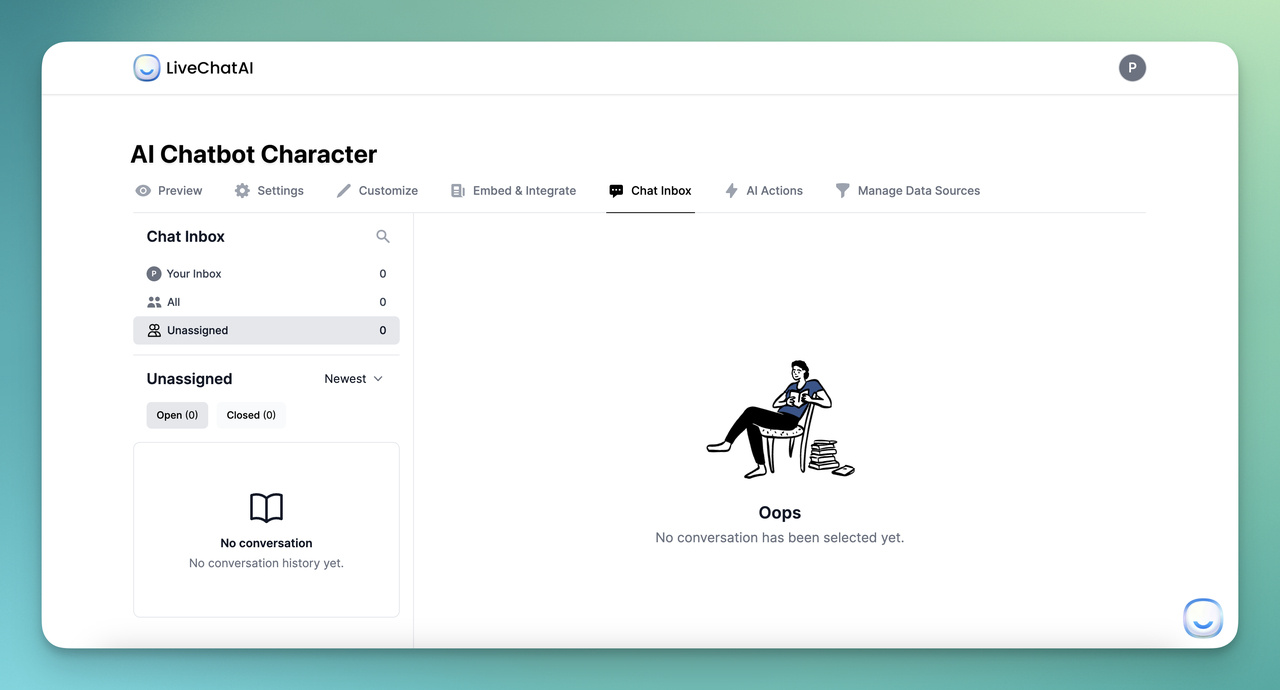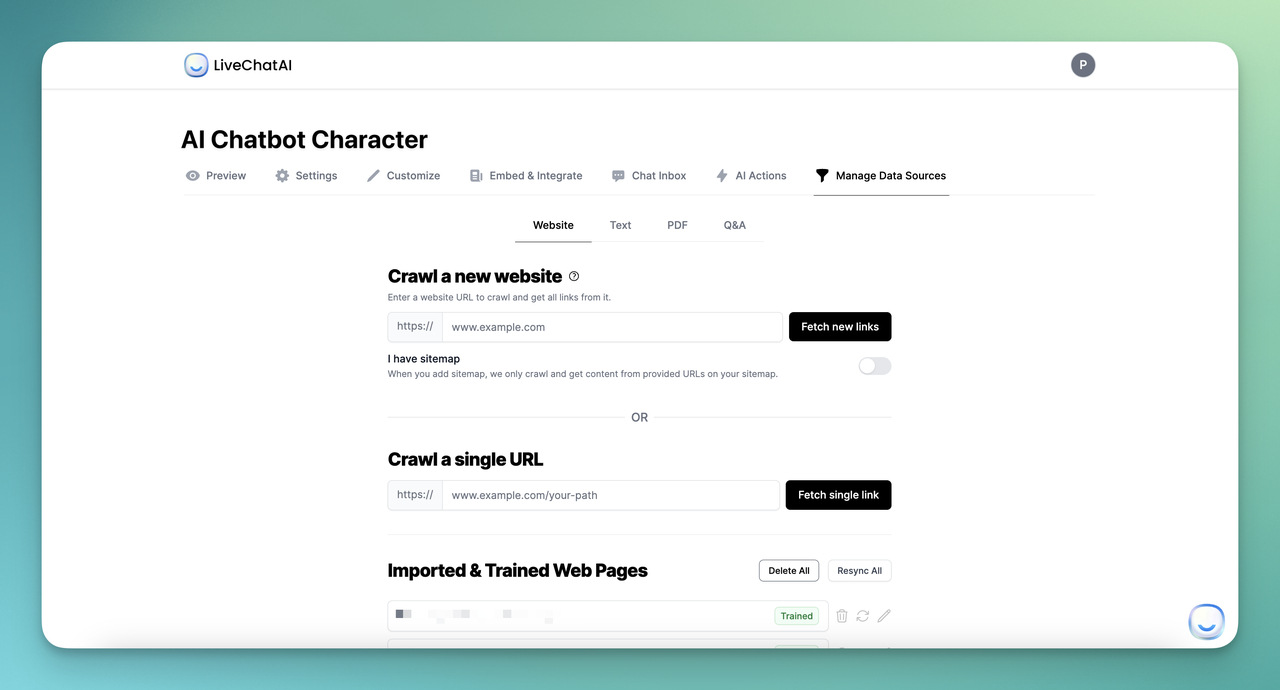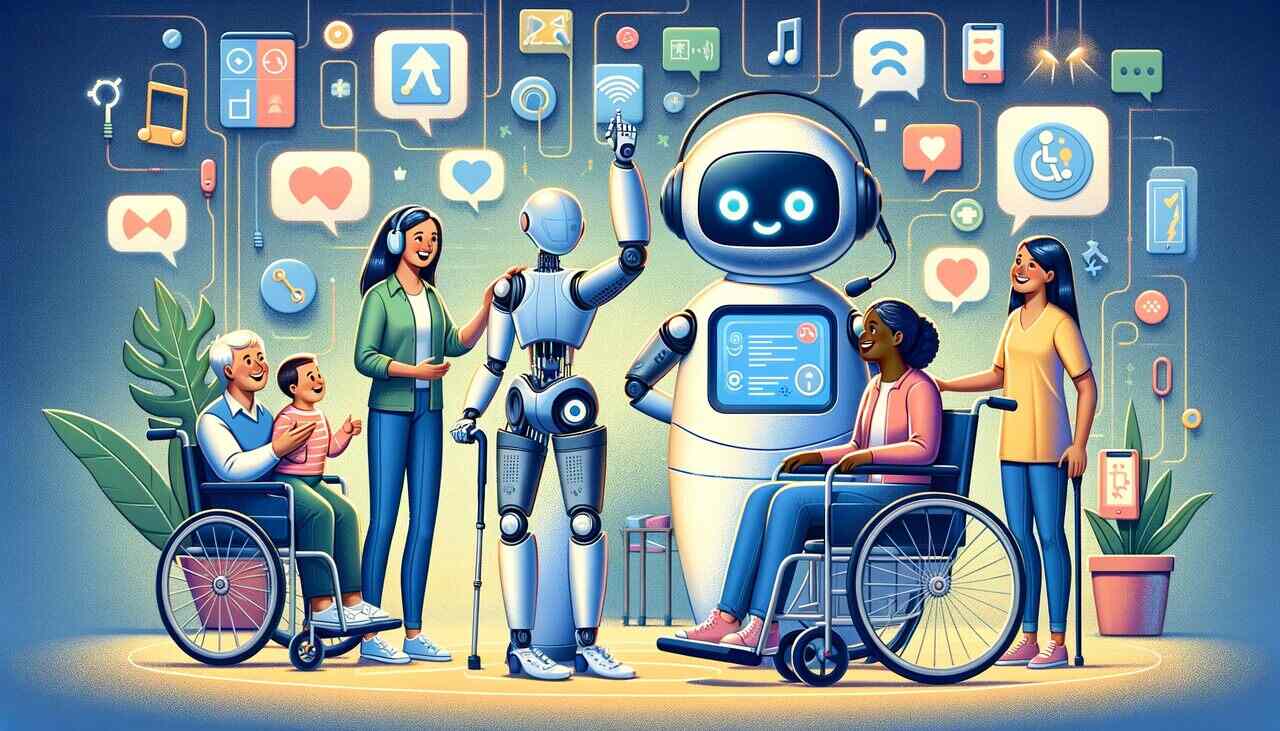
AI Chatbot Character- How to Create Custom AI Characters
Character AI chatbots are useful for creating new solutions by training different sources.
From enhancing customer service to revolutionizing entertainment and education, AI chatbot characters provide a glimpse into a future where technology becomes more intuitive, empathetic, and engaging.
Let’s learn how to create an AI chatbot character and details related together.
What is a Character AI Chatbot?
A character AI chatbot is a type of chatbot designed to simulate conversation with a fictional or real character using artificial intelligence technologies.
These chatbots are programmed to mimic the personality, speech patterns, and behavior of the character they represent, providing users with an immersive experience as if they are interacting with the character itself.

Character AI chatbots can be used for various purposes, including
- entertainment,
- education,
- customer service, and more.
For example, a character AI chatbot might be created to simulate conversations with historical figures, popular fictional characters from movies, books, or video games, or even brand mascots to engage customers uniquely.
How to Make a Character AI Chatbot with LiveChatAI
For the process of creating a general AI chatbot with LiveChatAI to create an AI chatbot character specifically, you would focus more on the personality, dialogue style, and interactive scenarios that reflect the character's traits.
Here's a step-by-step guide tailored to creating a character AI chatbot:
Step 1: Create a LiveChatAI Account
Sign up for LiveChatAI to begin the process of crafting your character AI chatbot. This will be your platform for customizing and managing the bot.
Step 2: Select Your Character Data Source

- Website: If your character is based on a website (e.g., a character from a web series), input the URL or add a sitemap to train the chatbot with relevant content.
✔︎ If the character's background and dialogues are available on a website, add the URL or use the sitemap feature to let LiveChatAI crawl the site for content.
- Text: For characters from books, scripts, or original concepts, you can title your content and input dialogue, descriptions, and character interactions in the designated format.
✔︎ For text-based sources, such as character scripts or descriptions, input this data directly. This is crucial for defining the character's voice and personality traits.
- PDF: If your source material is in PDF format (like a screenplay or a comic), upload the file directly to the platform.
✔︎ Upload any PDFs containing character-related content. This can include character bios, dialogues, or full storylines where the character appears.
- Q&A: For a more structured approach that is especially useful for FAQ-style interactions, import or manually add character-specific questions and answers.
✔︎ Use this option to define specific interactions, such as common questions about the character or typical dialogues, in a structured format.
Step 3: Customize and Train Your Character Chatbot
After selecting and uploading your data sources, review and customize the content. This step may involve refining the character's dialogue options or deleting irrelevant pages. Once satisfied, import the content to create your AI chatbot character.

Step 4: Decide on Human Support Inclusion
A modal will ask if you want to include human support. This feature can be toggled based on whether you want the option for users to interact with a human for inquiries the AI might not handle well.

Step 5: Customize Your Character Chatbot
→ Preview: Test and see how your character chatbot interacts in real time.

→ Settings: Customize the chatbot's name to match your character, adjust the base prompt to fit the character's speech patterns, select the appropriate GPT model, and set up any necessary live chat or email collection settings.

→ Customize: Tailor the chatbot's appearance and initial messages to match your character's theme and personality.

→ Embed & Integrate: Choose how and where to deploy your chatbot character — whether as a standalone page, integrated into an app, or through messaging platforms.

→ Chat Inbox: Review past interactions to refine the character's responses.

→ AI Actions: Set up automation to enhance user interactions with your character.

→ Manage Data Sources: Continually update and add to your data sources to keep your character chatbot engaging and dynamic.

This adapted process focuses on creating an AI chatbot that functions effectively and embodies the essence of the character it represents, offering users a unique and engaging interactive experience.
How Character AI Chatbot Can Be Used
Character AI chatbots offer a unique blend of entertainment, engagement, and utility across various domains. Here are some innovative ways they can be used:
1. Entertainment and Gaming
- Interactive Storytelling: Character AI chatbots can bring stories to life, allowing users to interact with characters from their favorite books, movies, or games, influencing the story's direction based on their choices.
- Virtual Companions: In video games or virtual reality environments, these AI chatbots can serve as companions, guides, or adversaries, enhancing the immersive experience with dynamic interactions.
2. Education and Learning
- Language Learning: By simulating conversations with characters from different cultures or historical periods, learners can practice language skills in a contextually rich and engaging environment. You can always create an education AI assistant.
- Historical Education: AI chatbots modeled after historical figures can make learning history interactive and personalized, allowing students to "converse" with historical personalities and gain insights into their lives and times.

3. Customer Service and Brand Engagement
- Brand Mascots: Brands can create chatbots based on their mascots or brand characters, offering a unique and engaging way to interact with customers and provide information and support.
- Product Exploration: In the context of products or services, character AI chatbots can guide users through features, benefits, and use cases in an interactive and friendly manner.
4. Health and Wellness
- Mental Health Support: Characters designed with empathetic responses can provide preliminary mental health support, offering a listening ear and basic guidance to users in need of someone to talk to.
- Fitness and Wellness Coaching: Character AI chatbots for healthcare can serve as personal trainers or wellness coaches, offering motivation, advice, and personalized plans to users.

5. Marketing and Advertising
- Interactive Campaigns: Brands can use character AI chatbots in marketing campaigns to engage users in interactive stories or challenges related to the product or service, driving engagement and brand recall.
- Product Personalization: Chatbots can help users choose products or services by asking preference-based questions and simulating a personal shopping experience.
6. Accessibility and Inclusion
- Assistive Technology: For individuals with disabilities, character AI chatbots can offer an accessible interface for technology use, providing assistance, companionship, and entertainment tailored to their needs.

7. Social and Cultural Engagement
- Cultural Ambassadors: Characters representing different cultures or social groups can promote understanding and appreciation of diversity through engaging and informative conversations.
8. Research and Development
- User Testing and Feedback: In the development phase of products or services, character AI chatbots can simulate user interactions, providing valuable feedback and insights to developers and researchers.
9. Personal Assistants
- Daily Scheduling and Reminders: Personalized character AI chatbots can manage schedules, set reminders, and even entertain users with character-specific content, making daily routines more engaging.
10. Art and Creativity
- Creative Collaborations: Artists, writers, and musicians can interact with character AI chatbots for inspiration, co-creation, and exploration of new ideas and artistic expressions.

AI chatbot characters can transcend traditional interaction models, providing rich, engaging experiences across various sectors and applications.
To Wrap Up
In conclusion, AI chatbot characters blend technology with creativity to offer more personalized, engaging, and immersive experiences.
If we refine AI technologies, they are boundless, promising a future where digital interactions are as rich and nuanced as real-life conversations.
Whether for learning, playing, or simply exploring, AI chatbot characters stand at the frontier of a more interactive, engaging, and human-centric digital world.
Frequently Asked Questions
How Does a Character AI Chatbot Work?
These chatbots leverage natural language processing (NLP) and machine learning algorithms to understand and respond to user inputs in a manner that reflects the character's known traits and dialogue style. The development of such chatbots involves training the AI with a dataset that includes examples of the character's speech and behavior, enabling the chatbot to learn how to respond in ways consistent with the character's persona.
Can AI chatbot characters replace human interaction?
While AI chatbot characters can simulate certain aspects of human conversation and provide valuable assistance or entertainment, they cannot fully replace the depth, emotional range, and spontaneity of real human interactions. They are best used as supplements to human interaction rather than replacements.
Can AI chatbot characters learn from interactions?
Yes, many AI chatbot characters are designed to learn from interactions to improve their responses over time. Through machine learning, they can adapt to users' preferences, refine their understanding of language, and better simulate the character they represent.






